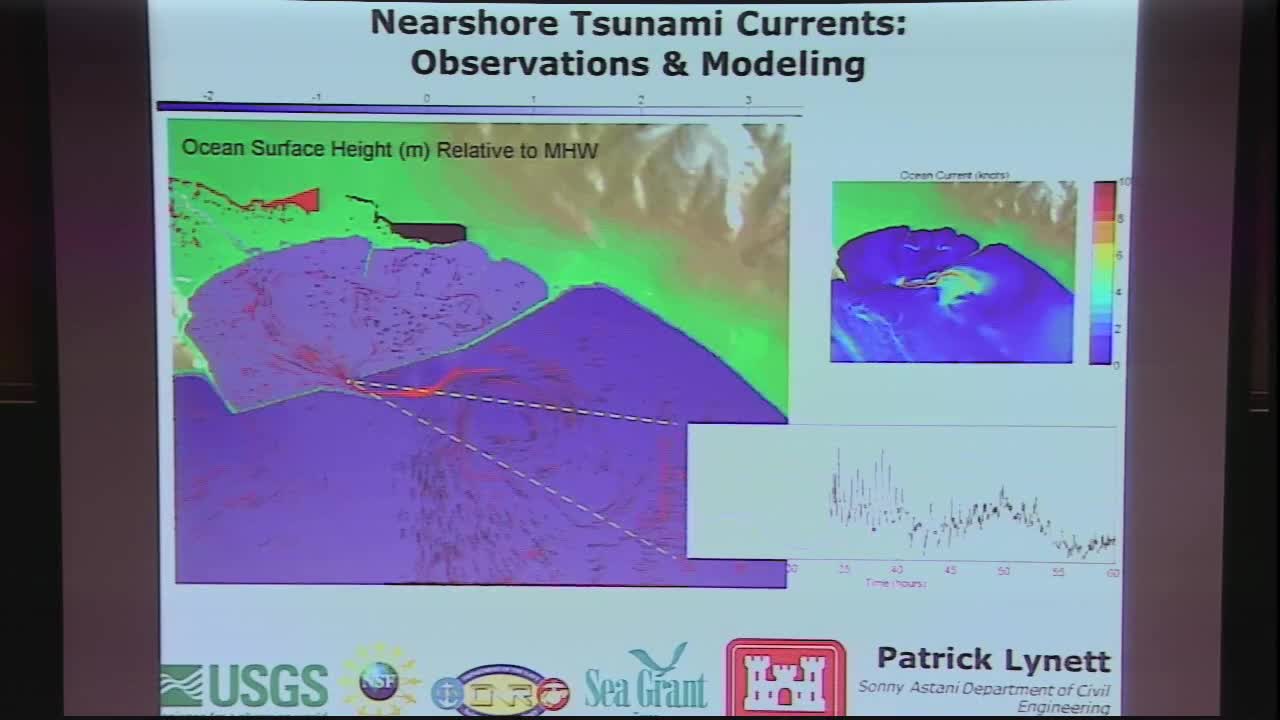Understanding the Generation and Dynamics of Tsunami-Induced Nearshore Currents
Presenter
October 14, 2014
Keywords:
- Fluid Dynamics
MSC:
- 58D30
Abstract
In this presentation, the well-established approaches of coupling tsunami generation to seismic seafloor motion and the following trans-oceanic wave propagation will be briefly introduced. The focus of the discussion will be on the complex transformation of the tsunami as it approaches very shallow water, as well as how these possibly large and fast-moving water waves interact with coastal infrastructure. Examples of coastal impact will be discussed and used to frame the theoretical efforts. We will show that the strongest currents in a port are governed by horizontally sheared and rotational shallow flow with imbedded turbulent coherent structures. Without proper representation of the physics associated with these phenomena, predictive models may provide drag force estimates that are an order of magnitude or more in error. Such an error can mean the difference between an unaffected port and one in which vessels 300 meters in length drift and spin chaotically through billions of dollars of infrastructure. Here, we present example simulation results of a numerical modeling study aimed at providing the California Geological Survey (CGS) and the California Emergency Management Agency (CalEMA) quantitative guidance on maritime tsunami hazards in California ports and harbors. Additionally, we will introduce a set of large-scale experiments performed at the Tsunami Wave Basin at Oregon State University as part of the National Science Foundation’s NEES Research program. The study focuses on tsunami induced currents and seeks to define the relative hazard in specific ports and harbors as a result of these currents.
